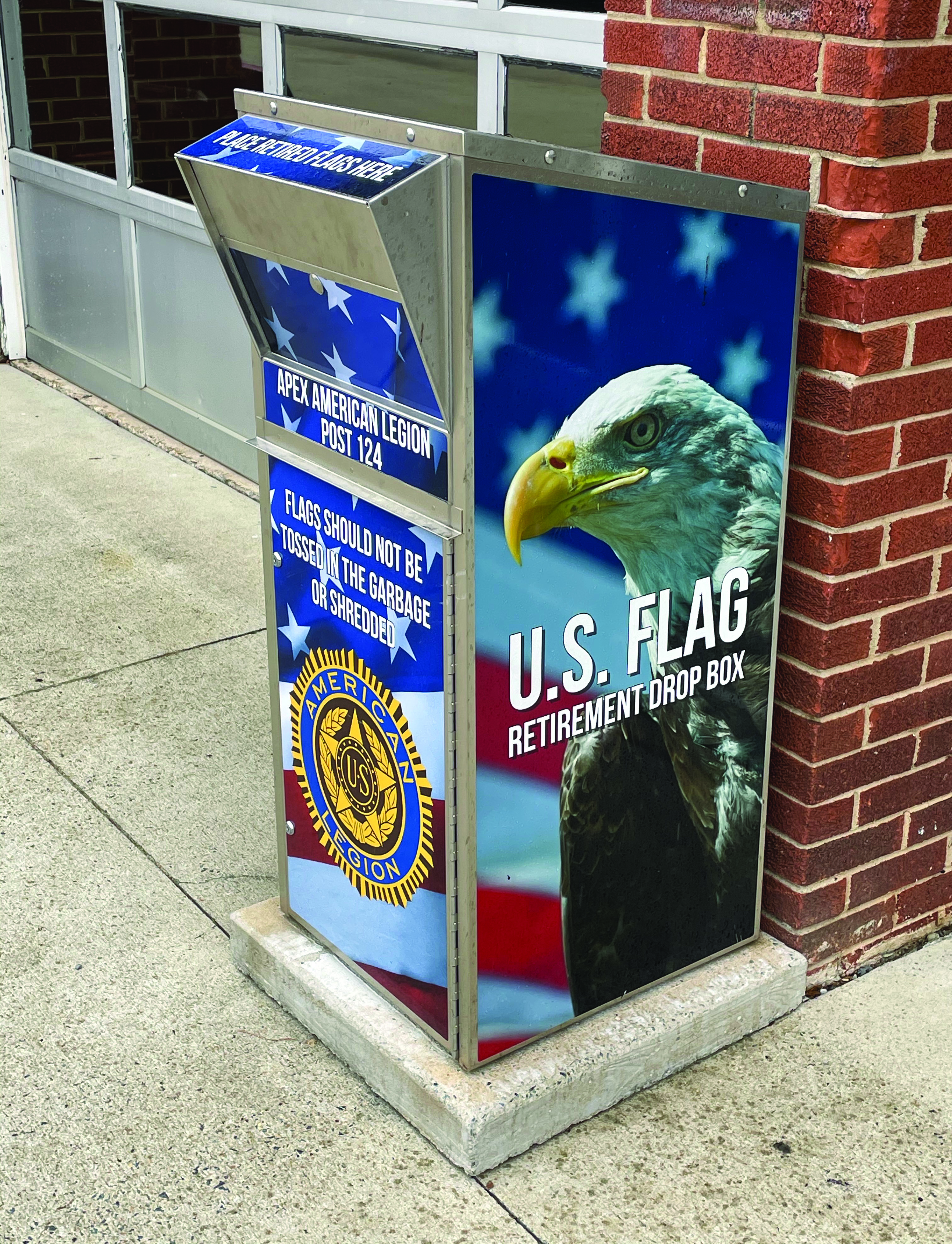You’re a grand old flag,
You’re a high-flyin’ flag
And forever in peace may you wave.
You’re the emblem of
The land I love,
The home of the free and the brave.
Ev’ry heart beats true
‘neath the Red, White and Blue,
Where there’s never a boast or brag.
Should auld acquaintance be forgot
Keep your eye on the grand old flag.[1]
My guess is that some readers had only to read the first line of this song before the old familiar tune was just begging to be hummed. I’d put money on Boy Scouts, Girl Scouts, and those of us in the generation that learned from childhood a handful of patriotic songs that paid respect to our nation and our flag.
With Flag Day on June 14 and Independence Day on July 4, this issue of Suburban Living is the perfect time to share some interesting facts about “Old Glory.”
If your early civics lessons are a little foggy, let’s start with this basic history lesson and timeline.
A Declaration of Independence
June 7, 1776 – By this time, the American colonies had been in conflict with England for a year. The Continental Congress met in Philadelphia at the Pennsylvania State House, which later became Independence Hall. At that gathering, Richard Henry Lee of Virginia presented a resolution with the famous words: “Resolved: That these United Colonies are, and of right ought to be, free and independent States, that they are absolved from all allegiance to the British Crown, and that all political connection between them and the State of Great Britain is, and ought to be, totally dissolved.” (Lee’s resolution was not immediately acted upon, although it prompted the drafting of a formal Declaration of Independence.)
June 11, 1776 – Consideration of the resolution was postponed by a vote of seven colonies to five, with New York abstaining. However, five representatives were given the task of drafting a document—a declaration, of sorts—stating the colonies’ case for independence. Members of this select committee were John Adams of Massachusetts, Roger Sherman of Connecticut, Benjamin Franklin of Pennsylvania, Robert R. Livingston of New York, and Thomas Jefferson of Virginia. Jefferson was given the job of wording the actual statement.
July 1-3, 1776 – The Continental Congress reconvened, and on the following day, the Lee Resolution for independence was adopted by 12 of the 13 colonies, New York not voting. Discussions of Thomas Jefferson’s Declaration had led to some minor changes, with revisions continuing through all of July 3 and into the following afternoon.
July 4, 1776 – Late in the afternoon, the Declaration of Independence was officially adopted. Of the 13 colonies, nine voted in favor of the document. Pennsylvania and South Carolina voted No, Delaware was undecided, and New York abstained. It is said that John Hancock, president of the Continental Congress, signed his name to the Declaration of Independence “with a great flourish” so England’s “King George can read that without spectacles!” And so it was that the 13 colonies claimed their independence from England and put into motion the formation of the United States. Today, the original Declaration of Independence is housed in the National Archives in Washington, D.C.
Adopting a National Flag
On June 14, 1777, one year after the creation of the Declaration of Independence, the Second Continental Congress met in Philadelphia. A resolution was adopted, stating: “Resolved, that the flag of the United States be thirteen stripes, alternate red and white; that the union be thirteen stars, white in a blue field representing a new constellation.”
The United States of America had an official national flag! However, the resolution provided no specific instructions regarding how the stars were to appear or be arranged. Some flags were designed with the stars arranged in rows, others in a circle, and still others were sewn with stars scattered on the blue field.
There have been more than 20 different iterations of the American flag. Since the original version in 1777 which bore the 13 stars and 13 stripes representing the American colonies, a new star was added every time a state became part of the union. The current design, with 50 stars and 13 stripes, has been the longest running since Hawaii became a state in 1959.
One element that was agreed upon by the founding fathers was color. They chose red to symbolize hardiness and valor; white for purity and innocence; and blue to represent vigilance, perseverance, and justice. Of course, it’s probably not a coincidence that the flag of Great Britain is also red, white, and blue.
Flag Day
The first known celebration of the U.S. flag took place in 1877 on the 100th anniversary of the Flag Resolution of 1777. However, our annual recognition of June 14 as Flag Day dates back to 1885. That year, Wisconsin schoolteacher BJ Cigrand organized an event for his students in which to celebrate the flag on June 14, the 108th anniversary of the adoption of the national symbol. He publicly advocated for a national “Flag Day,” and later became known as the “Father of Flag Day.”
In 1916, President Woodrow Wilson issued a proclamation that the anniversary of the Flag Resolution of 1777 be nationally observed on June 14, and President Calvin Coolidge did the same in 1927. However, it wasn’t until August 3, 1949, that an Act of Congress approved the designation of June 14 as National Flag Day and President Harry Truman signed it into law.
Today, Flag Day is not an official federal holiday, but Americans celebrate with flags on display, parades, ceremonies, and red, white, and blue decorations. Many veterans’ groups, civic organizations, and schools promote Flag Day as an opportunity to preserve the flag’s traditions and history and instill in others pride and respect for our national symbol.
The Pledge of Allegiance
“We pledge allegiance to the flag of the United States of America, and to the republic for which it stands, one nation under God, indivisible, with liberty and justice for all.”
We know the words well, but where did they come from?
The American Legion has documented that the Pledge of Allegiance that we recognize today was written by Francis Bellamy. On September 8, 1892, the Pledge was first printed and distributed publicly as part of a National Public Schools program to celebrate Columbus Day. School children first recited the Pledge of Allegiance this way: “I pledge allegiance to my Flag and to the Republic for which it stands one Nation indivisible, with Liberty and Justice for all.” The words “my Flag” were replaced by “…the flag of the United States…” in 1923 to dispel confusion in the event that foreign-born people might have in mind the flag of the country of their birth instead of the United States flag. A year later, “of America” was added after “United States.”
The words of the pledge were formally recognized by Congress and included in the U.S. Flag Code on June 22, 1942, and the official name of The Pledge of Allegiance” was adopted in 1945. The most recent change in language came on Flag Day 1954 when Congress passed a law adding the words “under God.” Flag Code states that changes to the Pledge of Allegiance must have consent of the President of the United States.
Flag Code
Ever wonder how wide the stripes on the flag should be? Or what constitutes “half-staff?” Or where all the rules for displaying, folding, and disposing of a flag came from? On Flag Day, June 14, 1923, the American Legion and representatives of 68 other patriotic, fraternal, civic and military organizations met in Washington, D.C. for the purpose of drafting a code of flag etiquette. The 77th Congress adopted the rules as public law on June 22, 1942. The Flag Code is rather interesting, and you can read it for yourself on the American Legion website (legion.org/flag/code: Title 4, United States Code Chapter 1).
A Glossary of Flag Terms
Whether you file this under “who knew?” or use it for a trivia game, we learned a few things and thought you might, too.
Band: A narrow strip of canvas along the edge of the flag that goes next to the staff. Sometimes called the “heading.”
Canton: The blue field in the upper left corner of the flag.
Color: In the military service, a national flag carried by unmounted units is called a “color.” The expression “the colors” is used generally in referring to the flag.
Dip: To dip the flag is to lower it at salute. Refers to a flag of an organization, state or city. The U.S. flag is never dipped.
Ensign: In the Navy, the national flag is usually spoken of as the “ensign.”
Finial: The object on the top of a flagpole – generally an arrow, ball or eagle.
Fly: The length of the flag.
Fringe or Gold: Gold braiding placed along the three edges of the flag away from the pole.
Grommet: The eyelet through which the halyard is fastened to the flag.
Half-staff: To lower the flag some distance (not necessarily halfway down) from the top of the staff, as a sign of mourning.
Halyard: The rope used to raise the flag. Also called a hoist rope.
Hoist: The width of the flag. To hoist the flag is to raise it to the top of the staff.
Old Glory: Refers to the U.S. flag. This famous name may have been coined in 1831. Some friends presented Capt. William Driver with a 24-star flag. As the banner opened to the ocean breeze, he exclaimed, “Old Glory!”
Peak: The highest point to which a flag can be raised.
Point of Honor: On the U.S. flag, this is the blue field and stars (union).
Staff: Flagpole. On a ship it may be referred to as a mast.
Union: The blue background with white stars, symbolizing the union of the states.
Disposing of a Retired, Worn, or Damaged Flag
In September 1937, at the 19th National Convention of The American Legion held in New York, a resolution was passed which outlined the Ceremony for Disposal of Unserviceable Flags. Since then, disposal ceremonies are often held annually on Flag Day.
Overall, the American flag should always be treated with respect and kept in good condition. Harsh weather can damage and degrade any fabric, so it is always recommended to display your flag on days when conditions are optimal and bring in your flag during inclement weather.
When displaying your flag outside, keep it away from anything that could cause wear. It is best to place it in an area that is free from rough surfaces, tree branches, wires, or other objects that can cause rips or tears. It is acceptable practice to repair a torn flag, as well as wash a flag if it becomes dirty.
Flags which are damaged beyond repair should be disposed of in a “dignified manner.” The Apex Fire Department in Historic Downtown Apex has a flag disposal box directly in front of its station doors. Organizations like the American Legion, Girl Scouts, Boy Scouts, and other civic clubs collect the disposed flags and hold ceremonies to retire them.
To find out what events the Town of Apex might be planning for this year’s Flag Day or July Fourth celebrations, check apexnc.org.
[1] Lyrics to “You’re a Grand Old Flag” were written by George M. Cohan for his musical George Washington, Jr. first performed in New York’s Herald Square Theater on February 6, 1906. As the story goes, Cohan met a Civil War veteran who fought at Gettysburg. The veteran was holding a “carefully folded but ragged old flag.” According to Cohan, the veteran commented that “she’s a grand old rag.” Cohan’s original song title was “You’re a Grand Old Rag,” but there was so much opposition to calling the flag a “rag,” that he renamed the song “You’re a Grand Old Flag.”
(Sources: nationalflagfoundation.org, www.legion.org, si.edu, military.com, history.com, loc.gov)








